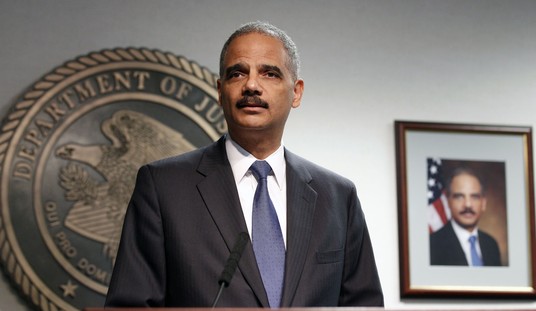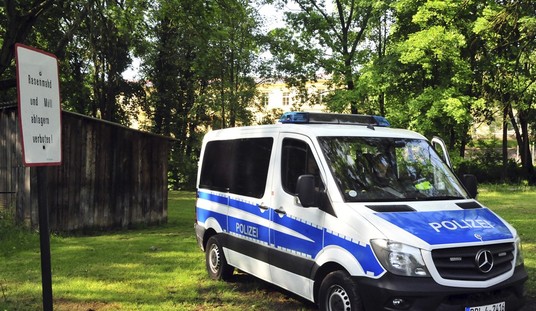Back in 2016, Adam Lankford, a University of Alabama professor, published a study claiming that roughly one-third of the mass shootings in the world take place in America. The study was widely panned almost immediately, with other experts in the field describing it as junk science which should never have made it into print in a scholarly publication, but it served as a perfect vehicle for the media to talk about the need for stricter gun control laws. But just how far off the mark was Lankford?
A new, comprehensive study released by John R. Lott jr., author of The War on Guns, suggests that Lankford missed by a country mile. In a summary of the study published by the Washington Times, we see that Lott’s figures indicate that the United States accounts for fewer than three percent of all mass shootings in the world. Of course, that remains an entirely ambiguous phrase (which we’ll get to in a moment), but no matter what definition you use, there are more mass shootings going on around the globe than you generally hear about.
John R. Lott Jr., president of the Crime Prevention Research Center, crunched the numbers and said his count shows that the U.S. had less than 3 percent of the world’s mass public shootings over a 15-year period.
That is smaller than the 4.6 percent of the world’s population that the U.S. accounts for — and way less than the 31 percent of global mass shooters that Adam Lankford, a professor at the University of Alabama, claimed in his widely publicized studies.
“If you fix the data, you get the opposite result from him,” Mr. Lott said. “He has the United States way out there, all by itself in terms of mass public shootings. He’s simply wrong. The United States, when I go through this, ranks 58th in the world in the rate of mass public shootings and 62nd in the world in terms of murders from mass public shootings.”
You can see all of Lott’s work here. One indicator that he’s on the right track is the fact that Glenn Kessler at the WaPo Fact Checker dug into the numbers and couldn’t come up with too much to complain about. Kessler doesn’t assign any Pinocchios to Lott’s work, primarily because he expends most of his effort arguing over precisely what qualifies as a mass shooting. But he does focus on the fact that Lankford refuses to share the data he used to arrive at his conclusions with the public or the press.
Lott’s work is meticulously documented, and he even made some adjustments at Kessler’s request to fit a different definition. He does quote one SUNY professor who claims that Lott errs in the other direction, undercounting American shootings and inflating international incidents, but other than that he seems generally open to Lott’s study.
We appreciate Lott’s willingness to recalculate his results based on our questions, as well as his decision to make public the voluminous data he has collected as he tried to replicate Lankford’s findings. Lankford has chosen to keep his data set private, which makes it difficult to understand how the two researchers come to such different conclusions. Indeed, Lott was unaware that Lankford did not include the Mumbai attacks in his data set until The Fact Checker learned that from Lankford. (That’s because Lankford refused to respond to his queries.) Lott’s results changed when he removed cases that might not fit the public’s definition of a mass shooting, just as they would change if a different definition of mass shooting is used.
A consistent definition of mass shooting — and public databases that display the relevant data — thus are necessary for the two sides of the gun debate to even begin to have a discussion on this issue. Lankford should reveal his dataset so it can receive the same scrutiny as Lott’s work.
Here’s my primary issue with all of this research. How are we expected to have an adult conversation about mass shootings and the proper government response to them when we can’t even agree on what qualifies as a “mass shooting” incident. If you read Kessler’s critique, he spends much of it picking out incidents of violence in other countries and challenging Lott over whether or not they qualify. Anything which is attributed to terrorism, involves members of the military or “militia activity” is rejected by Kessler. Lankford went even further, refusing to count shootings involving gang-related activity, drive-by shootings, hostage-taking incidents, robberies and acts of genocide.
How did we arrive at these rules of the road? If one or more people are using firearms to shoot a bunch of people, that’s a mass shooting, isn’t it? (I believe the default is usually three or more victims.) Some of these studies also conflate “mass murder” with mass shootings. And how on Earth did anyone decide that we wouldn’t count gang activity? By the definitions the Washington Post goes by, the horror show at Bunny Friend Park in New Orleans in 2015 wouldn’t be a mass shooting. Nearly two dozen people were shot in a matter of minutes. But because that was two rival gangs with poor aim shooting up a bunch of civilians in a public park (who were there to watch a music video being recorded) they don’t count it in the total tally.
If you’re taking a gun and shooting three or more people, it doesn’t matter whether you’re with the Crips, Al Queda, or are a disgruntled greeter at Walmart. You’re still a mass shooter. I think Lott’s report goes a long way toward clarifying the relative levels of gun violence in America and across the rest of the world, but I agree with Glenn Kessler on at least one point. We need to do a better job of adjusting our definitions before we can draw any meaningful conclusions.








Join the conversation as a VIP Member